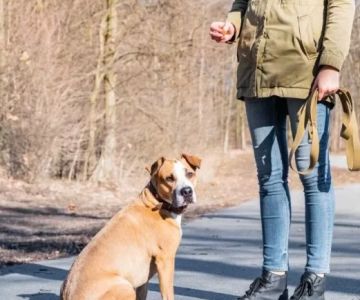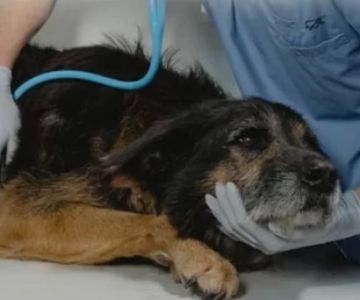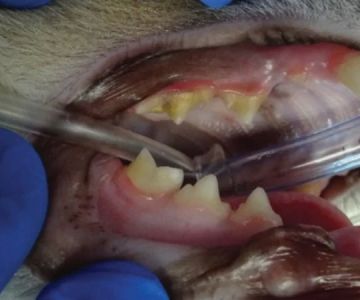How to Care for a Dog with Separation Anxiety: Tips and Solutions for Dog Owners
Separation anxiety in dogs is a common and challenging issue that many pet owners face. It’s heartbreaking to watch your dog suffer every time you leave the house. Fortunately, there are effective ways to care for a dog with separation anxiety and help them feel more comfortable when left alone. In this guide, we’ll explore the causes of separation anxiety, practical steps to manage it, and ways to help your dog cope better.
- Understanding Separation Anxiety in Dogs
- Signs of Separation Anxiety
- How to Help Dogs with Anxiety
- Training and Behavioral Therapy for Separation Anxiety
- Products for Dogs with Anxiety
Understanding Separation Anxiety in Dogs
Separation anxiety in dogs occurs when a dog becomes distressed and anxious when left alone or separated from their owner. This condition can manifest in various ways, from destructive behavior like chewing furniture to excessive barking or even accidents in the house. It’s essential to understand that separation anxiety is not a behavioral problem, but a real emotional issue for your dog.
One real-life example is Lily, a Labrador retriever who developed separation anxiety after her owner, Sarah, moved to a new city. Lily would bark and whine nonstop when Sarah left the house, and often chewed through the door frame in an attempt to escape. Sarah realized that Lily’s behavior was linked to anxiety, rather than simple disobedience, and began researching solutions to help her cope.
Signs of Separation Anxiety
Recognizing the signs of separation anxiety is the first step in helping your dog. Common symptoms include:
- Excessive barking, howling, or whining when left alone
- Destructive behavior, such as chewing or scratching doors and windows
- House soiling, even if the dog is housetrained
- Pacing, drooling, or panting when you prepare to leave
- Attempts to escape from the crate or confinement area
For example, Jack, a border collie, would start pacing back and forth and drool heavily whenever his owner, Tom, prepared to leave for work. Tom also noticed that Jack would chew on the furniture and bark loudly while he was gone. These behaviors made it clear that Jack was struggling with separation anxiety.
How to Help Dogs with Anxiety
There are several ways to help your dog manage separation anxiety. Here are some proven strategies:
- Gradual Desensitization: Slowly accustom your dog to being alone for short periods. Start with just a few minutes and gradually increase the time you’re gone. This technique helps your dog understand that being alone isn’t something to fear.
- Provide Distractions: Leave toys, puzzle feeders, or a comfortable bed to keep your dog engaged while you’re away. Giving them something to do can help redirect their anxiety.
- Keep Departures and Arrivals Low-Key: Avoid making a big deal out of coming and going. Keep your departures calm and quiet, and don’t give excessive attention when you return.
Sarah, for example, started gradually leaving Lily in another room for short periods. She used a food puzzle to keep Lily distracted and slowly extended the time she was gone. After a few weeks, Lily became more comfortable with Sarah’s absences and showed less anxiety when left alone.
Training and Behavioral Therapy for Separation Anxiety
Sometimes, dogs with severe separation anxiety require professional intervention. Behavioral therapy, specifically designed to address separation anxiety, can be incredibly helpful. Trainers can use techniques like counterconditioning and positive reinforcement to change your dog’s emotional response to being left alone.
Additionally, some owners turn to anxiety-reducing medications prescribed by a vet, especially in severe cases. These medications can help manage anxiety while behavioral therapy is implemented.
Take the case of Max, a golden retriever, whose separation anxiety was so severe that his owners sought the help of a professional trainer. With a combination of therapy sessions and anxiety-reducing medication, Max gradually learned to cope better with being left alone.
Products for Dogs with Anxiety
There are many products available that can help alleviate your dog’s anxiety. Some popular options include:
- Calming Collars: These collars release soothing pheromones that can help calm anxious dogs.
- Thundershirts: A pressure wrap that gently applies pressure to the dog’s body, helping to reduce anxiety and provide comfort.
- Interactive Toys: Toys that require your dog to solve a puzzle or work for treats can keep their mind occupied and reduce anxiety.
For instance, after trying several strategies, Jack’s owners decided to purchase a Thundershirt. They were amazed at how effective it was in calming him down, especially during thunderstorms or when they had to leave the house. This product made a noticeable difference in his anxiety levels.
By incorporating these tools and techniques, you can help your dog cope with separation anxiety and improve their quality of life. If you're unsure where to start or want additional support, visit a professional trainer or consult with your vet for guidance.
Interested in learning more about caring for a dog with separation anxiety? Visit Your Website for more tips and products to help your dog feel safe and secure!











